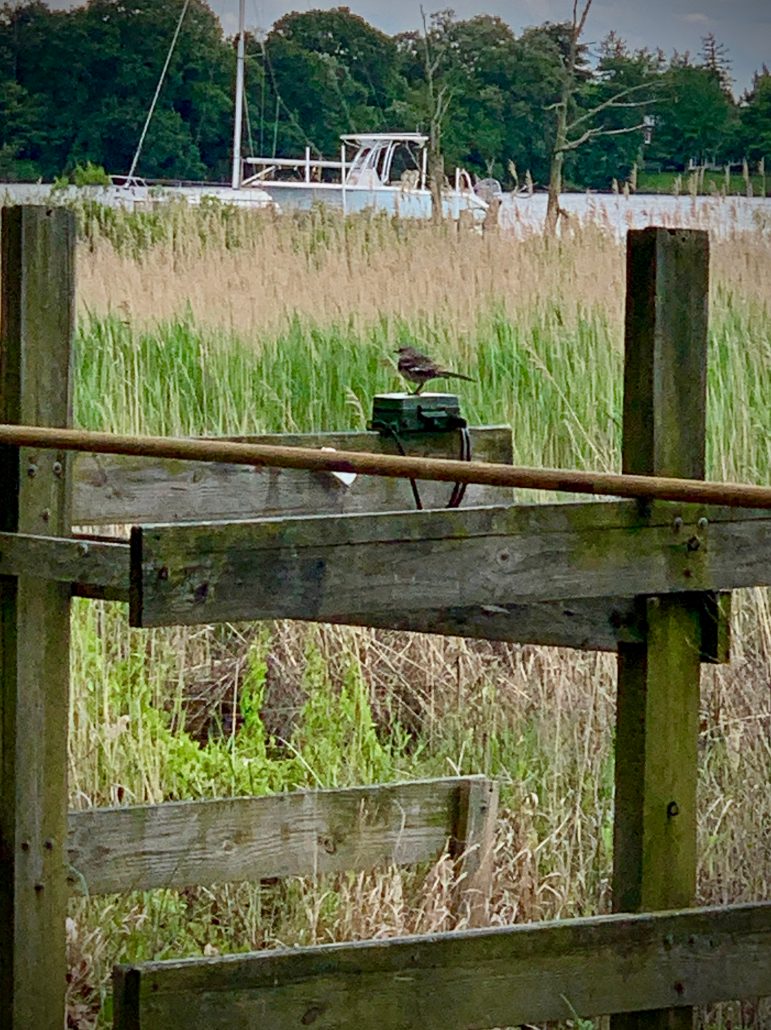The quiet, wintery months seem a distant memory in the vibrant Chesapeake estuary. The Songs of Adaptation team has research stations consistently recording in many locations around the watershed. The presence of so many vocalizing species is both exciting and daunting for the research team.
The team is using local knowledge with the recorded bioacoustic data to train computer algorithms to detect the presence of singing species at each location. While this methodology is effective, there are a number of challenges.
To illustrate one challenge, take a look at the photo below. Bill S. photographed a Northern Mockingbird sitting directly on the bioacoustic microphone at one of the research stations. Think about that; the many songs of birds such as the Mockingbird can be difficult for the computer algorithms to group together and recognize as one species.

Another exciting challenge of audio analysis is the simultaneous nature of bird songs. During times of peak songbird vocalization, multitudes of individuals vocalize all at once. Over time, different species that commonly share the same habitats have stratified so that their songs take up different frequencies. They have adapted together to share the airspace of different habitats.
Now, when using computers to detect audio patterns across months worth of data at a time, it can be difficult that the species do not take turns singing. Below is an example of an early morning bird and bug chorus from a tidal research station in the Chesapeake watershed.
The challenges of single species making multiple vocalizations and of multiple species vocalizing at the same time are not game-enders for the machine learning process involved with Songs of Adaptation; they are merely opportunities to keep learning and to hone methodologies.
